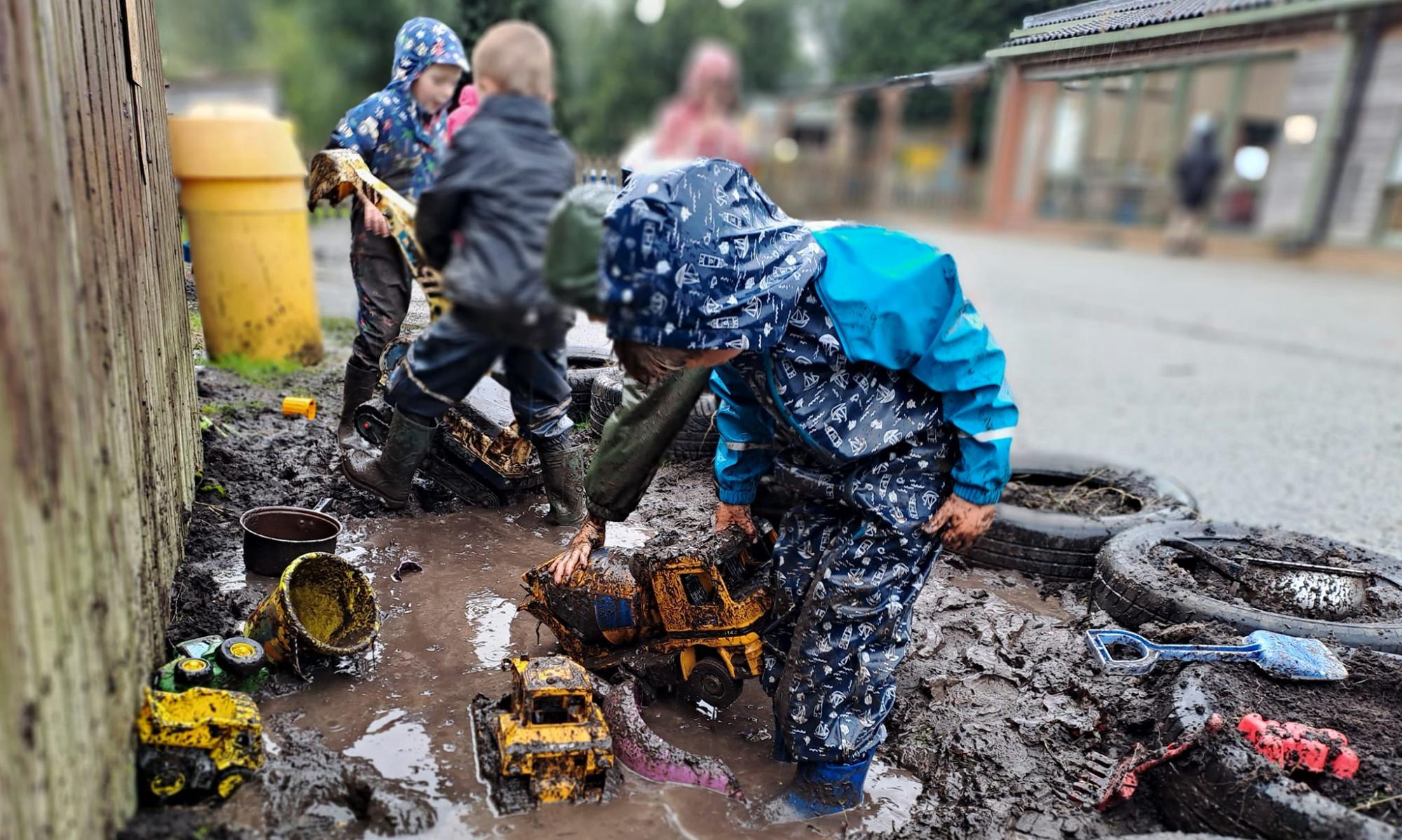
Michael Follett is a specialist in children’s play and is passionate about the importance of playing with mud. “It’s so tactile,” he gushes. “You can use it as paint. You can squish it into a pot. You can make a mud pie. You can make cappuccinos!”
As a former play worker and founder and director of Opal (Outdoor Play and Learning), which supports schools to improve play opportunities, Follett is evangelical about the benefits of unstructured outdoor play.
“It is so important for children’s mental and physical health to have access to green space and nature every day, and if the price of that is getting a bit muddy then we should embrace it.”
last week after apologising to parents and carers whose children had gone home muddy after a particularly heavy downpour.
The mud play area at Holsworthy Church of England primary school, with a digging pit and mud cafe, was part of a recent revamp of the school’s outdoor play area.
“We felt that our children needed something better at playtime and lunchtime,” says the headteacher, Amy Frost. “The playground [before] was pristine but there was nothing for them to do. As schools we have become quite fearful of allowing our children to take risks. It gets to the point where all risks are removed and children don’t learn what risk is and how to manage risk.”
To change this, the school worked with a mentor from Opal and designed different zones for den building, climbing and muddy play. The children wear “active uniforms” – essentially a PE kit – with waterproofs and wellies for when the weather is bad, and hose attachments for rinsing off mud.
Frost says there have been a few comments from people who found it “difficult to adjust”, but parents were overwhelmingly supportive. “My son is caked in mud but he’s having fun!” one parent commented. Another said: “We’d rather do extra laundry and see them thrive.”
Follett argues school uniforms are part of the problem. “They’re putting these children in ridiculous white socks, white shirts, pretty little dresses, court shoes. We should get Bear Grylls to design primary school uniform.”
Fewer children in the UK are playing in mud than ever before. Children today have less access to unstructured outdoor play. Their playtime has become more organised, there is less of it and their play spaces are more sanitised.
Helen Dodd, a professor of child psychology at the University of Exeter, says: “The decline in children getting muddy is part of our risk aversion. We want to keep children safe and clean and tidy, and in doing so we stop children from doing the things that children naturally do.”
Change has been gradual, across generations. “But I think a lot of it is to do with just feeling: is it risky? What might be in the mud? If they put their fingers in their mouths, are they going to get poorly? We gradually got more and more risk averse and more controlling about what children can and can’t do.”
Dodd thinks parenting books may have contributed. “There’s increasingly been this idea that you can do parenting properly, that there’s a right way and a wrong way of doing it, and along with that, more judgment. And obviously protecting your child is a good thing to do in the general sense. Nobody wants their child to get hurt.”
So why is it important for children to play in mud? “When they’re young, that’s what they’ll do,” says Dodd. “They’ll walk through muddy puddles, they’ll jump in them, they’ll splash, they’ll want to get their hands in there, feel what the mud feels like.
“If we want to give children space to connect with nature and understand nature then they need to be able to do that in an unrestricted way, and a consequence of that is that they might get muddy.
, just in terms of the biology of what’s in the mud, and how it affects our immune system. Also in terms of sensory things. Lots of children now have sensory difficulties. They don’t like particular textures, they don’t like the feel of different things. And some of that might come from being kept overly clean.”
Children have never before seen so much and experienced so little, says Follett. “All of their experiences are secondary, through screens shut in bedrooms or strapped in buggies with iPads in front of them.
“What they’re lacking is real primary experience, touching, feeling, manipulating. You know that feeling of squeezing a handful of mud, and it all coming through, oozing through your fingers? You’re not going to get that playing Minecraft.”
Tips for enjoying mud
Get them started young. If they haven’t got their hands in mud or felt a range of textures before the age of three, they’re probably not going to like it.
It doesn’t need to be a big outing to the wilderness, it can be a little muddy area in the back garden. Use cutlery, bowls and saucepans for pretend cooking. Try mud painting.
Wear appropriate clothing. If you’re out in nature and you’re wearing the right clothes for it, you’ll embrace it more.
As a parent or carer, if you don’t feel comfortable playing in mud, pretend you do. Your child will be led by you.
Be sensible where you let your children play. Don’t play where you know there’s animal poo.


Post a Comment
0Comments